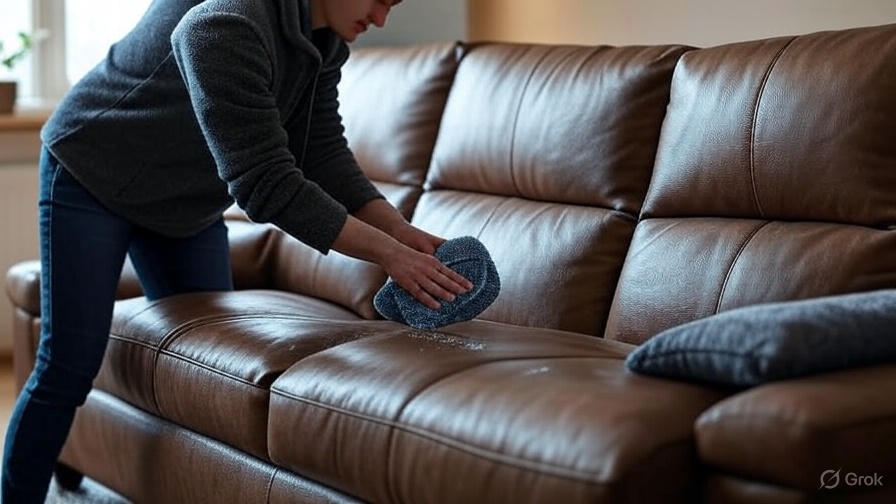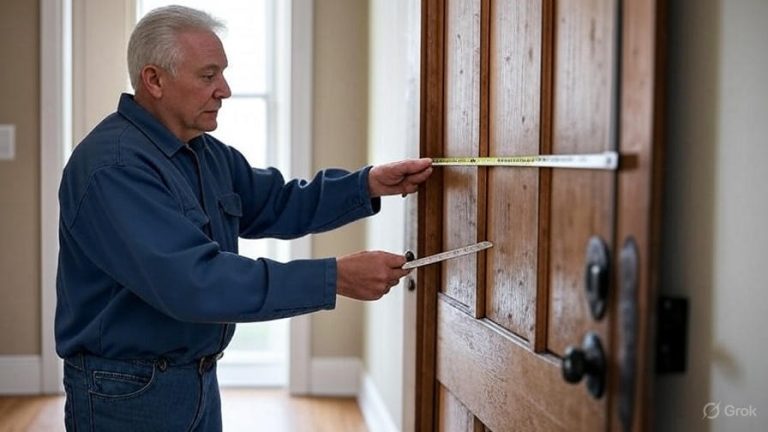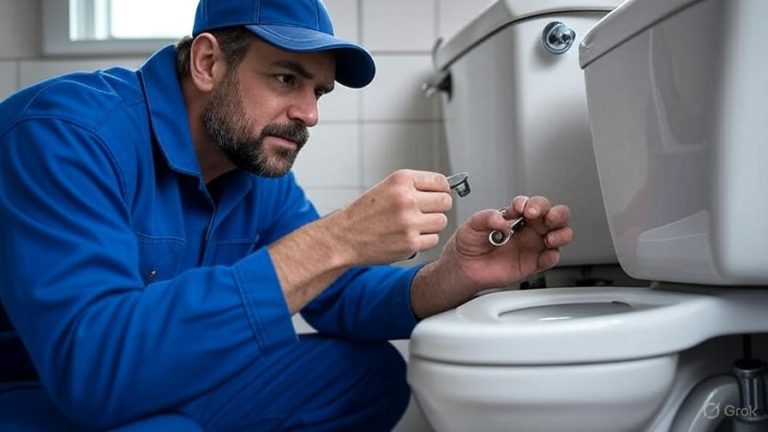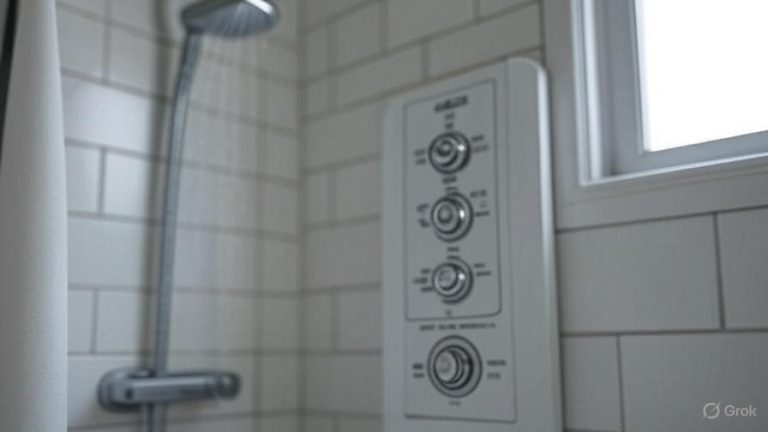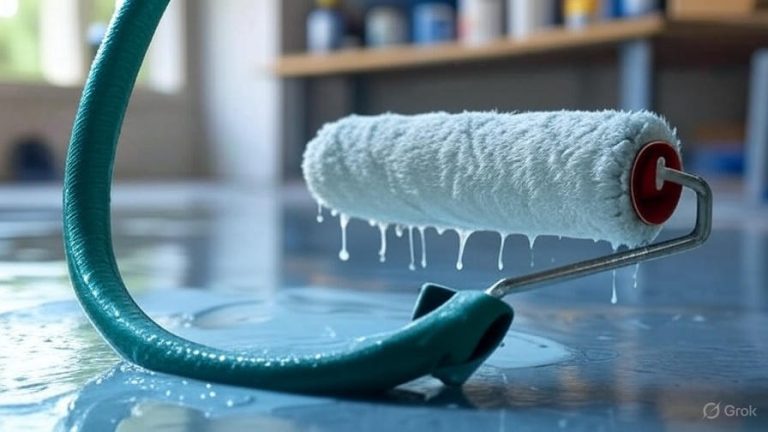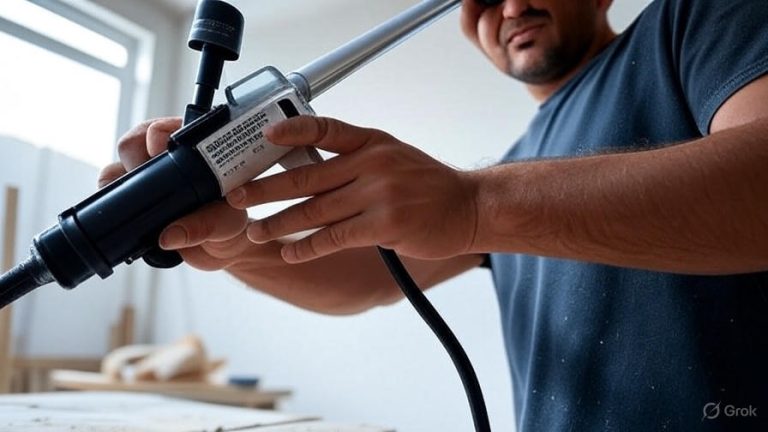How to Clean Your Faux Leather Sofa
Your faux leather sofa brings style and comfort to your living room, but keeping it clean requires the right approach. Many homeowners struggle with maintaining their synthetic leather furniture because they treat it like genuine leather or regular fabric. This comprehensive guide walks you through proper cleaning techniques, maintenance tips, and troubleshooting solutions to keep your faux leather couch looking fresh for years.
What Makes Faux Leather Different from Real Leather
Faux leather consists of a fabric base coated with polyurethane or vinyl materials. This synthetic construction makes it more affordable than genuine leather while offering similar aesthetics. However, the cleaning process differs significantly from natural leather care.
The polyurethane coating creates a barrier that repels some liquids but can crack when exposed to harsh chemicals. Regular fabric cleaners often damage this protective layer, leading to peeling and discoloration. Therefore, you need specific cleaning methods designed for synthetic materials.
Essential Supplies for Cleaning Faux Leather Sofas
Before starting the cleaning process, gather these necessary items:
- Microfiber cloths (at least 3-4 pieces)
- Vacuum cleaner with upholstery attachment
- Mild dish soap or specialized faux leather cleaner
- Warm water
- Soft-bristled brush or old toothbrush
- Clean spray bottle
- Lint-free towels
- Leather conditioner designed for synthetic materials
Having the right tools prevents damage during cleaning and ensures better results. Microfiber cloths work best because they lift dirt without scratching the surface.
Step-by-Step Deep Cleaning Process
Remove Loose Debris and Dust
Start by removing all cushions and pillows from your sofa. Use the vacuum cleaner with an upholstery attachment to remove crumbs, pet hair, and dust from crevices. Pay special attention to areas where the backrest meets the seat cushions.
Run the vacuum over the entire surface using gentle strokes. Avoid pressing too hard, as excessive pressure can damage the synthetic coating. This initial step prevents dirt from spreading during the wet cleaning phase.
Create Your Cleaning Solution
Mix one tablespoon of mild dish soap with two cups of warm water in a spray bottle. Shake gently to combine the ingredients. Avoid using hot water, as heat can cause the faux leather to crack or warp.
Test this solution on an inconspicuous area first, such as the back corner of the sofa. Wait five minutes to ensure no discoloration or damage occurs before proceeding with the full cleaning.
Clean the Surface
Spray the cleaning solution lightly onto a small section of the sofa. Work in manageable areas, roughly two feet by two feet, to prevent the solution from drying before you can wipe it away.
Use a microfiber cloth to gently wipe the surface in circular motions. Apply light pressure to lift dirt and grime without damaging the coating. For stubborn stains, let the solution sit for two minutes before wiping.
Immediately follow with a clean, damp cloth to remove any soap residue. Soap left on the surface can cause buildup and attract more dirt over time.
Dry Thoroughly
After cleaning each section, use a dry microfiber cloth to remove excess moisture. Allow the sofa to air dry completely before replacing cushions or using the furniture. This typically takes 2-4 hours depending on humidity levels.
Never use heat sources like hair dryers or place the sofa in direct sunlight to speed drying. Heat can cause cracking and permanent damage to synthetic leather materials.
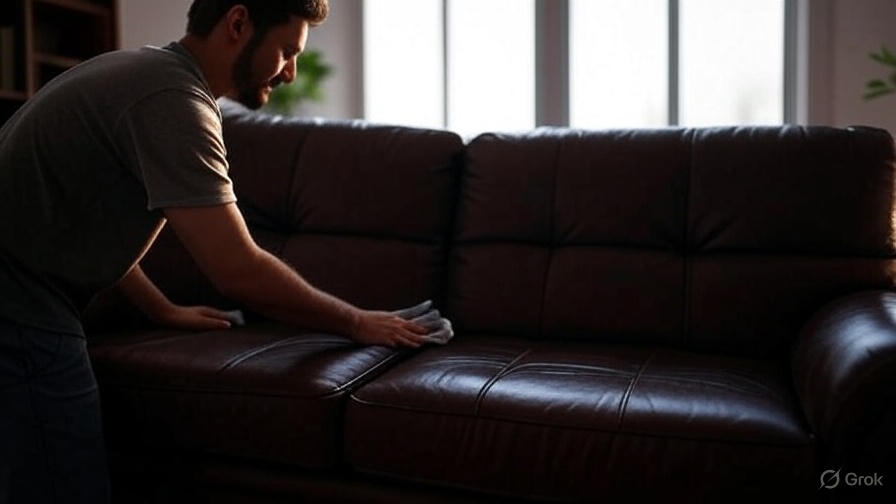
Tackling Common Stains on Faux Leather
Food and Beverage Spills
Act quickly when spills occur. Blot the liquid with a clean cloth instead of rubbing, which can push the stain deeper into the material. Create a paste using baking soda and water for greasy stains.
Apply the paste to the affected area and let it sit for 15 minutes. The baking soda absorbs oils and odors naturally. Gently brush away the paste with a soft-bristled brush, then clean with your soap solution.
Ink and Marker Stains
Rubbing alcohol works effectively on ink stains but requires careful application. Dampen a cotton swab with isopropyl alcohol and dab the stain gently. Work from the outside edges toward the center to prevent spreading.
Test the alcohol on a hidden area first, as some faux leather types react poorly to alcohol-based products. If discoloration occurs, stop immediately and consult a professional cleaner.
Pet Stains and Odors
Pet accidents require immediate attention to prevent permanent damage and odors. Blot up as much liquid as possible, then clean with an enzyme-based cleaner specifically designed for pet stains.
These cleaners break down organic compounds that cause odors. Apply the product according to manufacturer instructions, then follow with your regular cleaning solution to remove any residue.
Weekly Maintenance Routine
Regular maintenance prevents deep stains and extends your sofa’s lifespan. Vacuum the surface weekly using the upholstery attachment. This removes dust and prevents it from settling into the material’s texture.
Wipe down the sofa with a slightly damp microfiber cloth every few days. This quick cleaning removes surface dirt before it becomes embedded. Focus on high-touch areas like armrests and seat edges where oils from skin contact accumulate.
Rotate and flip cushions regularly to ensure even wear patterns. This simple step prevents one area from becoming more worn or faded than others.
What to Avoid When Cleaning Faux Leather
Several common cleaning mistakes can permanently damage your synthetic leather sofa. Never use harsh chemicals like bleach, ammonia, or acetone-based products. These substances break down the polyurethane coating, causing peeling and cracking.
Avoid abrasive scrubbing pads or stiff brushes that can scratch the surface. Steel wool and rough sponges create permanent marks that cannot be repaired.
Don’t soak the material with excessive water. Unlike fabric upholstery, faux leather doesn’t absorb moisture well, and excess water can seep into seams and cause mold growth.
Skip oil-based conditioners designed for genuine leather. These products can’t penetrate synthetic materials properly and often leave a sticky residue that attracts dirt.
Protecting Your Investment
Apply a synthetic leather conditioner every 3-6 months to maintain flexibility and prevent cracking. These products are specifically formulated to work with polyurethane and vinyl coatings.
Keep your sofa away from direct sunlight and heat sources. UV rays cause fading and make the material brittle over time. Use window treatments or rearrange furniture to minimize sun exposure.
Maintain consistent room temperature and humidity levels. Extreme fluctuations cause the material to expand and contract, leading to premature cracking.
Professional Cleaning vs. DIY Maintenance
While regular maintenance keeps your sofa looking good, professional cleaning may be necessary for severe stains or annual deep cleaning. Professional services have specialized equipment and products not available to consumers.
Consider professional cleaning if your sofa has extensive staining, persistent odors, or signs of mold growth. These issues often require industrial-strength equipment and expertise to resolve safely.
For routine maintenance and minor stains, DIY cleaning proves both effective and economical. The techniques outlined in this guide handle most common cleaning challenges successfully.
Extending Your Faux Leather Sofa’s Lifespan
Proper cleaning is just one aspect of furniture care. Use furniture covers or throws in high-traffic areas to reduce direct wear on the synthetic leather. This is particularly important if you have pets or young children.
Address spills and stains immediately rather than letting them set. Fresh stains remove much more easily than those that have had time to penetrate and dry.
Keep pets’ nails trimmed to prevent scratches and punctures in the material. Small tears can quickly become larger problems if not addressed promptly.
Seasonal Care Considerations
Different seasons present unique challenges for faux leather furniture care. During humid summer months, increase ventilation around your sofa to prevent moisture buildup that can lead to mold growth.
Winter heating systems can dry out synthetic materials, making them more prone to cracking. Use a humidifier to maintain optimal moisture levels in your living space.
Spring cleaning is an ideal time for deep cleaning and conditioning your faux leather furniture. This prepares it for increased use during warmer months when windows stay open and outdoor activities bring more dirt indoors.
Troubleshooting Common Problems
If your faux leather sofa develops a sticky feeling after cleaning, soap residue is likely the culprit. Wipe the surface with a clean, damp cloth to remove any remaining cleaning product, then dry thoroughly.
Cracking often results from age, heat exposure, or using inappropriate cleaning products. Small cracks can sometimes be minimized with specialized synthetic leather repair kits, but extensive cracking usually requires professional restoration or replacement.
Fading typically occurs gradually due to UV exposure. While you can’t reverse this damage, proper placement away from windows and regular conditioning can slow the process significantly.
When to Consider Replacement
Even with proper care, faux leather sofas have a finite lifespan. Consider replacement when cracking becomes extensive, the surface feels permanently sticky despite cleaning, or the material begins peeling in large sections.
These signs indicate that the synthetic coating has deteriorated beyond repair. Continuing to use furniture in this condition can be uncomfortable and may pose health concerns if particles begin flaking off.
Quality faux leather sofas typically last 5-10 years with proper care. Higher-end synthetic materials often have better durability and resistance to wear than budget options.
Cost-Effective Maintenance Tips
Regular cleaning prevents the need for expensive professional services or premature replacement. Invest in quality microfiber cloths and gentle cleaning products rather than using whatever household items you have available.
Create a monthly inspection routine to catch small problems before they become major issues. Early intervention for stains, scratches, or loose seams costs much less than major repairs.
Keep records of your cleaning schedule and any treatments applied. This information helps you track what works best for your specific furniture and can be valuable if warranty issues arise.
Your faux leather sofa represents a significant investment in your home’s comfort and style. With proper cleaning techniques and regular maintenance, you can keep it looking beautiful and comfortable for many years. The key lies in using appropriate products, gentle techniques, and consistent care routines that work with the synthetic materials rather than against them.
Remember that prevention often proves more effective than correction when it comes to furniture care. By incorporating these cleaning and maintenance practices into your household routine, you’ll enjoy your faux leather sofa’s beauty and comfort while protecting your investment for the long term.

